Home »
Misc »
How much pressure in a basketball
How much pressure in a basketball
How Much Air Pressure Should a Basketball Have to Bounce Properly?
Are you a regular basketball player that’s puzzled about why some basketballs bounce better than some others? Yeah right! So, you’re quick to conclude that the bouncing ability of the ball depends on the brand that produces it.
Thus, you think a Spalding is better than a Nike, Franklin, Champion Sports, MacGregor or Fanmats? And some other basketball players think otherwise—choosing the brand they love above others.
It’s typical for you to be biased and support your favorite brand as the best basketball manufacturer in the market. On that note, it will interest you to know that the brand has nothing to do with the bouncing deficiency of your basketball.
But here’s what we found out.
The amount of air pressure in your basketball contributes majorly to the bounce rate of your basketball.
We‘ll be talking extensively, in this article, about how much air pressure your basketball should have—for it to bounce correctly.![]() Also, we would discuss other vital factors that contribute to the air pressure and bounce rate of a basketball.
Also, we would discuss other vital factors that contribute to the air pressure and bounce rate of a basketball.
Quick Navigation
What Happens When a Basketball Isn’t Bouncing Properly?
The obvious answer, right? If your basketball isn’t bouncing correctly, the first issue it creates is to hinder your game performance. But, beyond that, we need to go deep into the foundation of this problem and find out why your basketball isn’t bouncing correctly.
If you’re like us that recently found out that the amount of air pressure in a basketball determines its bounce level, then, we’re on the same page. But, if you haven’t, it is not too late to join the bandwagon.
Dealing with Air Pressure
The force that pushes air against every solid surface it comes in contact with is the air pressure. In simpler terms, the more air in an enclosed area, the higher the air pressure. If this theory is correct, that means you need an optimum amount of air in your basketball to get the best bouncing result on the court.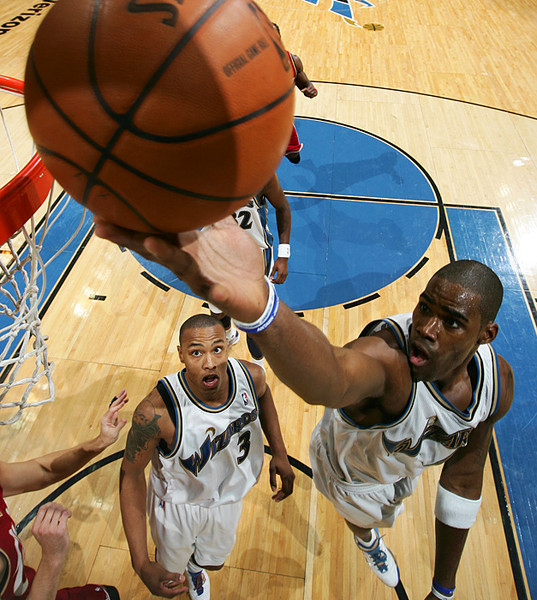
Before we move on:
Did you know that air is mattered? You heard, right! The air we breathe? Of course! But, you’re surprised because you have always thought that matter in quote had to be solid. At least, that’s what your science teacher taught you in mid-school—she told you, “Matter is anything that has got mass and occupies space.”
But here’s the cracker.
Air has weight, mass, and volume (You can ask your science teacher). What that means is air takes up space. So, you can see it fits into the definition. We know, it sounds weird to think of air as matter, when you can’t touch or run into it.
Think of it this way. Your basketball, bike tire, bouncing castle or air mattress get their mass and form because of the air and air pressure in them. In this case, it’s the air pressure in your basketball that gives your ball the round shape and bouncy feel.
Recommended Air Pressure Required for a Basketball to Bounce Optimally
The typical basketball requires at least a reading of 8 lbs(pounds by square inch) to get appropriately inflated. If you’re lucky enough, you can buy a basketball that has the inflation instructions printed by the manufacturer to help you get the default air pressure of the ball.
If you’re lucky enough, you can buy a basketball that has the inflation instructions printed by the manufacturer to help you get the default air pressure of the ball.
If your ball is not far from you now, you can quickly go check it out and come back to the article. For instance, you may see something like “Inflate 7 to 9 psi.” You saw that, right? Don’t bother if you didn’t see it on your ball—not every manufacturer prints it on their basketballs.
NBA recommends that the air pressure in a basketball must be between 7.5 and 8.5psi. You can use this standard measurement as a guide to get the required air pressure for your basketball.
A quick way to check if your ball has the proper air pressure is by taking this simple test. Drop your basketball from the height of your shoulder and leave it to bounce. If it bounces up back to the height of your hips, then your ball probably has the appropriate air pressure required to deliver on the court.
Three Factors That Can Affect the Internal Air Pressure of a Basketball
Here are three primary factors that affect the bounce level of your ball.
1. Ball Pressure
When you properly inflate your basketball, you enhance its elastic bladder—making it capable of rebounding when it hits a hard surface like the rim. In essence, the higher the air pressure in your basketball, the higher its bounce and otherwise. But, you have to be wary not to over-inflate your basketball to avoid the bladder breaking, which will negatively impact the consistency of the ball’s bounce or even cause leakage.
2. Environmental Pressure
Most times, the surrounding air pressure around a basketball is equally constant, but you should always consider environmental air pressure as it always comes in play—affecting the bounce level of the basketball.
The air is usually less dense or thinner at higher altitudes. And when the air is less dense, objects aren’t still affected as much by the air resistance going against them—whether they fly or bounce through the air.
What this means is that air pressure from the surroundings will hardly affect your basketball enough to mar your game outdoors. However, it contributes significantly to the height of your ball’s bounce. That takes us to the next factor.
However, it contributes significantly to the height of your ball’s bounce. That takes us to the next factor.
3. Temperature
A decrease in temperature will result in a decline in air pressure inside your basketball. Plus, the bounce level of a basketball primarily depends on the air pressure inside a basketball—as we discussed earlier.
Thus, when a basketball hits and bounces on the floor of a gym with average room temperature, the force of the bounce impact pushes the bottom surface of the ball while compressing the gas inside it.
But here’s a kicker.
According to Boyle’s law, the pressure of the gas inside the basketball increases, when a ball bounces on a hard surface, especially when you’re playing at the park during summer.
But, it’s a different ball game in winter. The internal air pressure of a basketball decreases when it bounces on a hard surface.
Since the internal air pressure of the basketball decreases at a lower temperature, the impact of the ball with the ground will also have less effect when it hits the ground. By that, the basketball does not bounce high enough as it does at a higher temperature.
By that, the basketball does not bounce high enough as it does at a higher temperature.
In Closing
It’s wise to use a small pump and pressure gauge when inflating your basketball. A report showed that you need about 12 strokes to get something close to the perfect air pressure, which is around 7.5 – 8.5psi.
Thus, you should avoid using high-pressure pumps designed for cars and bike tires. They can easily over-inflate and destroy your basketball.
Of the three factors mentioned earlier in this article, which one struck you as the most important? Has that factor affected your game before? Have you damaged your ball previously because of over-inflation? Tell us your story; we’re eager to see your comments, suggestions, and feedback.
How Much Air Pressure Should a Basketball Have?
If you have played or watched basketball long enough, does it occur to you how much air pressure should a basketball have? Honestly, if you have not played basketball, you would think that it doesn’t even matter.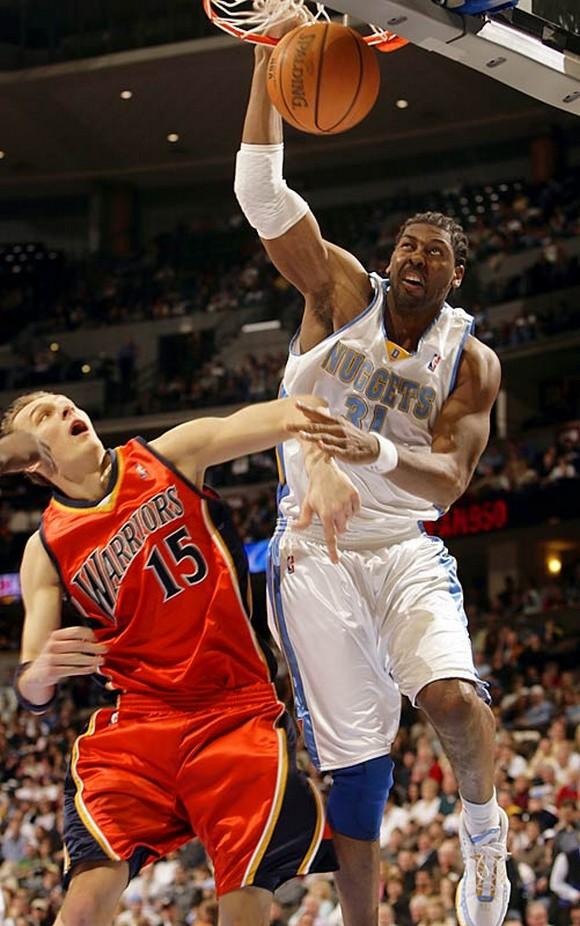 But if you have played the sport, you would know that some balls bounce a lot better than others. Is it because of the brand? It could be a factor, but perhaps the most crucial element is air pressure.
But if you have played the sport, you would know that some balls bounce a lot better than others. Is it because of the brand? It could be a factor, but perhaps the most crucial element is air pressure.
Does it Matter How Much Air is In Your Basketball? We hate to answer with a little sarcasm, but aren’t we also concerned about how much air is in the balloons at some kids’ party? Or about how much air should be in our car tires? The answer is, of course, a resounding, yes! It would only be natural to prefer one basketball brand over another, but the main factor contributing to how good (or bad) your ball bounces is the air pressure.
What, then, is air pressure? It is the force or push of the air against anything that it comes in contact with. In this case, it is the leather or the rubber in a basketball. The more air there is inside, then the air pressure increases.
Needless to say, a basketball player should be worried if the ball is not bouncing correctly.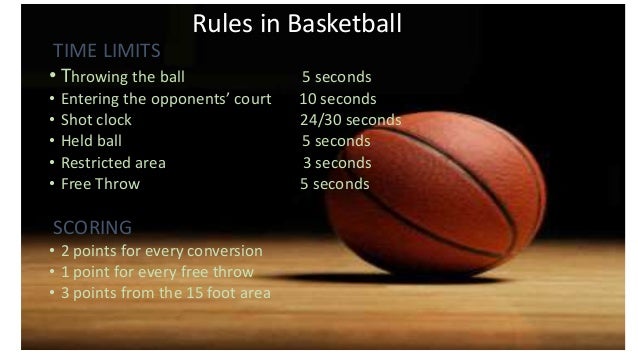 It does slow your performance down, whether we are talking about shooting, dribbling, or the accuracy of passes. A basketball player that feels uncomfortable with how the ball bounces quickly becomes distracted and may even lose confidence throughout the game.
It does slow your performance down, whether we are talking about shooting, dribbling, or the accuracy of passes. A basketball player that feels uncomfortable with how the ball bounces quickly becomes distracted and may even lose confidence throughout the game.
How Do You Measure Air Pressure in Basketball? You can measure air pressure in a basketball by using an air pump with a built-in pressure gauge. The recommended air pressure for a basketball is 7.5 to 8.5 psi (pounds per square inch). That is also the NBA basketball air pressure recommendation. As you can see, there isn’t a fixed air pressure endorsement by the NBA, but you can use this recommendation as a guide to getting the right air pressure.
How Much Air Pressure is in a NBA Basketball? As previously noted, the NBA basketball air pressure instruction is between 7.5 to 8.5 pounds per square inch. Some balls have air pressure recommendations printed in them, and it may state “up to nine pounds,” but obviously, the NBA prefers it to be just a little lower than the maximum allowable air pressure in a ball.
In the case of FIBA, the international governing body for basketball did not specify a pressure range. Instead, it indicates that the ball should bounce between 1,200 to 1,400 mm (47.2 to 55 inches) when dropped at the height of 1,800 mm (or approximately 70 inches). In addition to the “ball bounce” test, FIBA rules also mandate that the balls be subjected to fatigue strength, valve leak, practice, and heat storage tests.
Ironically, even with NBA basketball air pressure recommendations, the balls are rarely measured during games. That is because most pumps that are used do not have gauges, and even if they do, it does not accurately indicate air pressure. From that standpoint, FIBA’s “ball bounce” instructions appear to be a sound and practical procedure in determining the right basketball air pressure.
Will More Air in a Basketball Bounce Higher? Yes, more air in a basketball makes the ball bounce higher. Why? Because as you inflate the ball, the more compressed the air becomes so it can fit inside.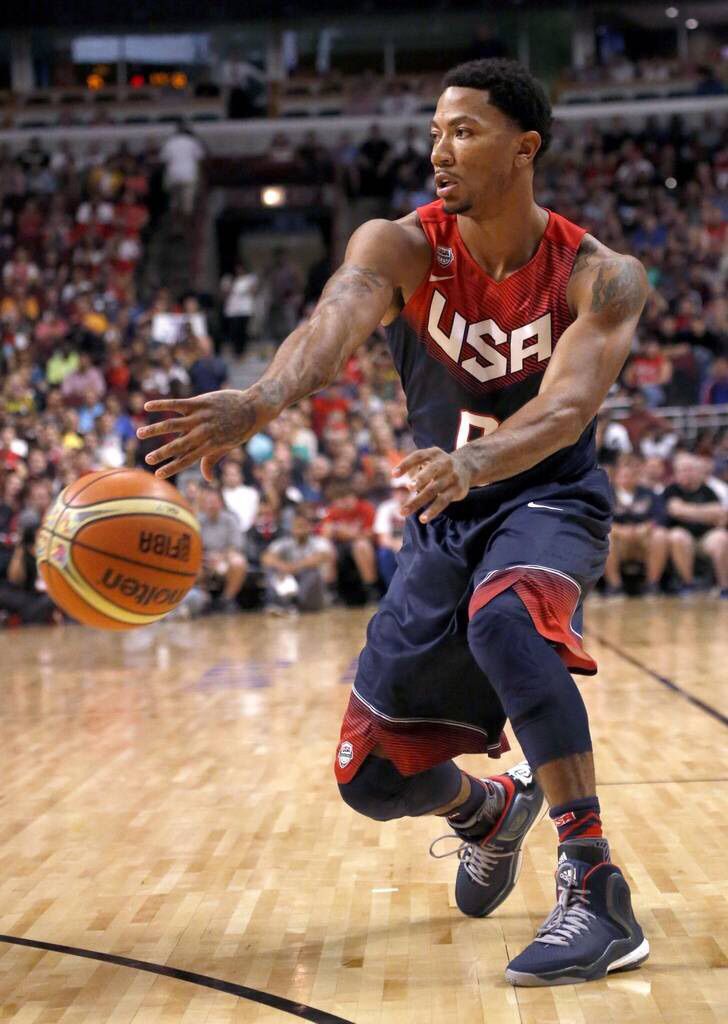
Now, as it becomes more compressed, the air presses the inside of the ball with more force. If you are dribbling the ball, it produces a pushing action even more inside the basketball. The air pushes back, so to speak, with force equal to the amount of air pressure in the air. (This is known as the Third Law of Motion that briefly states: “In every action, there is always an equal and opposite reaction.”) That force is what thrusts the ball back up. If there is more air inside the basketball, it pushes harder back up when the basketball is bounced.
Again, the short answer would be, yes, it makes the ball bounce higher. But then again, it doesn’t hurt knowing the science behind it.
Does Temperature Affect the Bounce of a Basketball?Yes, the temperature can affect the way a basketball bounces. Since we have already talked a little about science, then perhaps, we should continue on with it. It involves what is called the Ideal Gas Law, a combination of natural laws discovered by Boyle, Charles, Avogadro, and Gay-Lussac.
It states that there is a specific relationship between volume, pressure, and temperature in a confined system. To cut the geeky story short, it means that when a basketball is subjected to increased temperatures, the volume of the air pressure inside increases. The opposite is also true: If exposed to colder temperatures, a basketball’s air pressure decreases.
Understanding the concept of the Ideal Gas Law will make you aware of the playability of the ball. From that Law, we can assess that a temperature change of plus-10 degrees Fahrenheit can increase the pressure by a pound per square inch. Conversely, if you played in an environment that is 10 degrees colder, the basketball’s air pressure drops a pound per square inch. In the latter conditions, say, a ball has been inflated to 8 psi. It follows, then, that playing in such circumstances will drop the ball’s air pressure to 7 psi, a tad below the minimum recommended NBA basketball air pressure of 7.5 psi.
How Can You Tell if a Basketball is Pumped Enough?It is pretty easy if you have an air pump with a gauge, but the thing is, gauges are also inaccurate to a certain degree. That is probably why the NBA gave a recommendation range of 7.5 to 8.5 psi to provide a room for error. All that being said, we think FIBA’s ball-bouncing recommendation should tell you if a basketball is pumped enough if you can’t find a gauge.
That is probably why the NBA gave a recommendation range of 7.5 to 8.5 psi to provide a room for error. All that being said, we think FIBA’s ball-bouncing recommendation should tell you if a basketball is pumped enough if you can’t find a gauge.
Does the Air Pressure in a Basketball Affect Your Shot?This is a tricky question, and while we are inclined to say yes, air pressure does affect your shot, it might not be accurate in all cases. Air pressure may affect the result of the shot, but it should not affect your mechanics as long as it’s not too soft or squishy to the touch. It should not change the trajectory of the ball, either.
Now, how can air pressure affect the outcome of your shot? It’s because basketballs with higher air pressure often bounce farther off the rim while the ball with a lower air pressure has a higher chance to ricochet in or bounce near the basket. So, air pressure may affect how a ball bounces off the rim rather than affecting the shooting mechanics or the ball’s trajectory.
Wrapping Things Up: How Much Air Pressure Should a Basketball Have? A basketball should have the right air pressure for the players to feel comfortable handling it. Many will write off the importance of putting the correct air pressure on a basketball, but in reality, it is an essential part of the game. If the players are not comfortable with how the ball bounces during a live dribble, it can negatively influence his overall game.
There are really no rules on how much air pressure is needed in a basketball. If you’re just playing pickup or recreationally, it may all boil down to the preferences of the players. However, in the NBA, the recommended air pressure is between 7.5 to 8.5 pounds per square inch (psi).
In FIBA, they use a somewhat instinctive rule that a ball should not bounce higher than 70 inches and no lower than 47 inches. In our opinion, FIBA’s rule is a lot simpler and maybe even more accurate since air pressure gauges are not usually around.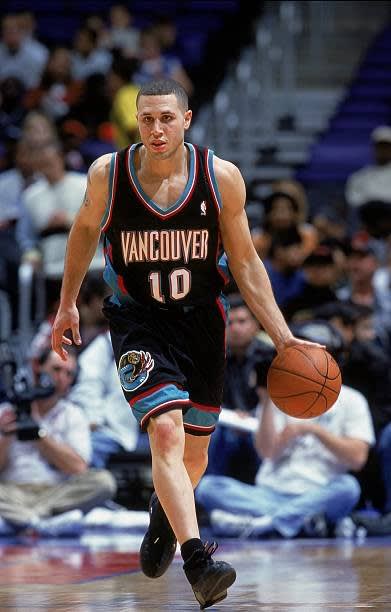 If there are gauges lying around, they may also not give the precise air pressure reading.
If there are gauges lying around, they may also not give the precise air pressure reading.
What many did not know, though, is that temperature can affect the air pressure in the ball. How so? Because of the Ideal Gas Law, it is found that a difference of 10 degrees Fahrenheit can approximately increase or decrease the air pressure by 1 psi. Knowledge of this natural law is essential, especially in the NBA. That’s because playing in certain temperatures can reduce the air pressure of the ball below the league’s recommended range.
Now, if you’re wondering whether the ball’s air pressure can affect your shot, the short answer is no. It should not affect your mechanics as well as the trajectory of the ball. The issue lies in what happens after the shot. Simple physics suggests that a ball with too much air pressure bounces farther from the rim while the ball with the lower air pressure will likely bounce near the basket. All of these factors should be taken into consideration when we’re talking about how much air pressure should a basketball have.
Because you read this post, you might find our reviews on the best basketball pumps helpful.
We also answer other frequently answered questions on basketball here.
> What Size is an NBA Basketball?
> How to Clean a Basketball: The Ultimate Guide
> How to Inflate a Basketball Without a Needle or Pump?
Basketball size 7,6,5,3 (weight, diameter, pressure)
Home / All sports / Basketball size 7,6,5,3 (weight, diameter, pressure)
03/20/2020 All sports Leave a comment 25,381 Views
Share with friends
Basketball size varies by league, governing body, and gender and age of students. Basketballs differ from each other in weight, pressure, circumference and material of manufacture. According to the official rules of the game, the game projectile must have a spherical shape, be made in orange and have 8 black inserts and seams.
The official size of a basketball is numbered 7, it has the following characteristics: weight (mass) is - 567-650 grams, circumference - 749-780 cm, atmospheric pressure - 0.56 - 0.63 kg / cm 2 . This is the largest ball, and now look at the rest in the table:
| Size | Circumference (cm) | Weight (grams) | Pressure (kg/cm 2) | Where applicable |
| 7 | 749-780 | 567-650 | 0.56 - 0.63 | Professional Men's Basketball, Boys 14+ |
| 6 | 724-737 | 510-567 | 0.56 - 0.63 | Women's professional basketball, girls 12+, boys 12-13 |
| 5 | 690-710 | 470-500 | 0.56 - 0.63 | Boys and girls 10-11 years old |
| 3 | 560-580 | 300-330 | 0.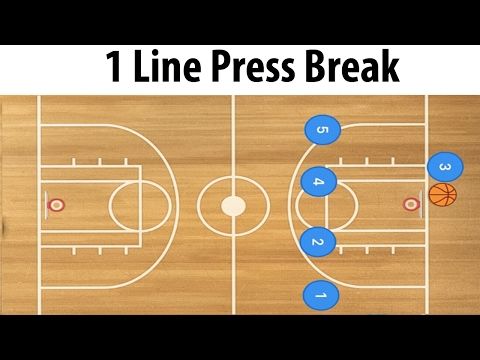 56 - 0.63 56 - 0.63 | Boys and girls 4-9 years |
Pass the Basketball Test
Basketballs are made from natural leather or synthetic leather - the pressure is the same for all sizes. It is worth remembering that a correctly inflated ball of the correct size is important to ensure quality training and skill development for players of different ages.
For games held under the auspices of the International Basketball Federation (FIBA), the ball is inflated to air pressure so that when it falls onto the court from a height of 1.8 meters, it should bounce to a height of 1.2-1.4 meters (measured by the top of the game ball).
Indoor and outdoor basketballs
There are no differences between the versions of the game in terms of size, but there are other nuances regarding manufacturing. Indoor balls are made of genuine leather, and outdoor balls are made of rubber.
Leather basketballs intended for indoor use should not be used outdoors. Concrete or asphalt surfaces cause the leather to become rough and wear out quickly, eventually resulting in poor hand-ball contact. Also, some balls for playing inside are made of composite or synthetic leather, but their quality leaves much to be desired.
Concrete or asphalt surfaces cause the leather to become rough and wear out quickly, eventually resulting in poor hand-ball contact. Also, some balls for playing inside are made of composite or synthetic leather, but their quality leaves much to be desired.
For outdoor play, manufacturers make balls with a rubber surface, as it is able to interact better with rough field surfaces. Rubber basketball will be a good choice for beginner players as it is much easier to control and develop skills.
Best Selling Basketball Brands
Basketball is very popular all over the world, which means that ball manufacturers do not have to sit idle, because they need to compete, create a quality product and, accordingly, make a profit. Here are the 3 best selling basketball brands in the world.
- Spalding (USA)
- Wilson (USA)
- Molten (Japan)
Spalding makes balls for the most popular league in the world, the NBA.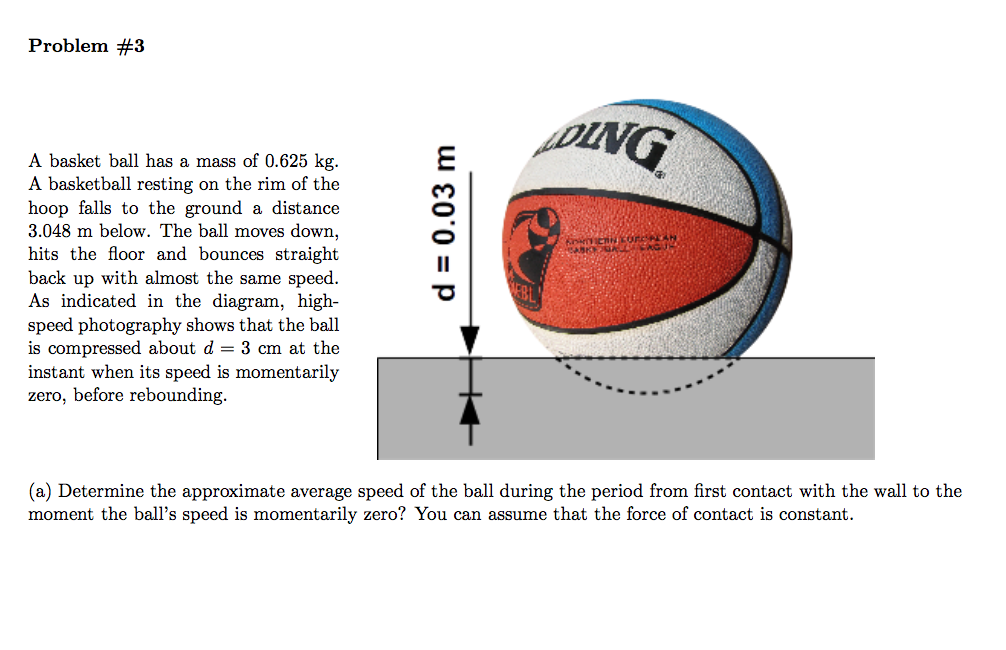 Wilson is in demand with the NCAA and most of the youth leagues in the United States of America. But Molten is the main supplier of game equipment for FIBA tournaments, European championships and even the Olympic Games.
Wilson is in demand with the NCAA and most of the youth leagues in the United States of America. But Molten is the main supplier of game equipment for FIBA tournaments, European championships and even the Olympic Games.
Note that on average for men, a standard size 7 basketball sells for $30-60.
Basketballs have changed a lot since the beginning of the game in the late 19th century. Today, technology has made it possible to make very high-quality and even smart balls. This was not always the case, because decades have passed and the balls have undergone many changes and improvements, although at the very beginning, James Naismith, the founder and father of basketball, used a soccer ball to play, which his students threw into peach baskets.
A new wave of basketball ball design, sweat throughout the appearance, will stand out flawless technology. This applies to the panels of the game projectile - now there are 8 of them, and the new composite structures have only two. New modern balls are constantly advertised by manufacturers. There are those that can control humidity, have more pimples - dots, and are even able to track the entire process of the game and in live mode and send information (strength of throw, rotation, impact) to Android or iPhone. Such a ball is 94Fifty.
New modern balls are constantly advertised by manufacturers. There are those that can control humidity, have more pimples - dots, and are even able to track the entire process of the game and in live mode and send information (strength of throw, rotation, impact) to Android or iPhone. Such a ball is 94Fifty.
Free throw in basketball: execution technique
2020-03-20
Check also
Share with friendsThe women's final of Wimbledon 2022 has ended, in which the second racket of the world, the representative of Tunisia, Ons ...
Influence of air pressure on ball bounce height
- Authors
- Executives
- Job files
- Award documents
Chernyshev G.S. 1
1GBOU School 2120
Vagidova Z.R. 1
1GBOU School 2120
The author of the work was awarded a diploma of the winner of the III degree
Diploma of a student Certificate of the head
The text of the work is placed without images and formulas.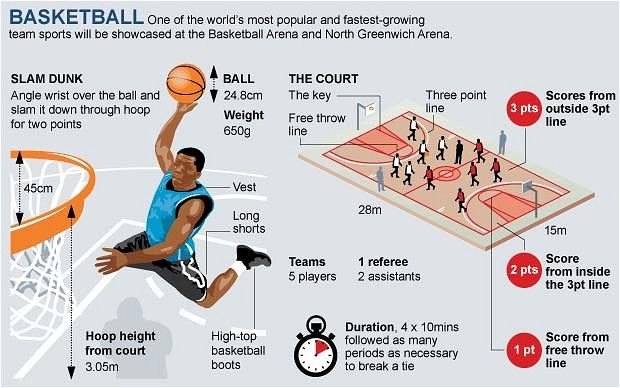
The full version of the work is available in the "Files of the work" tab in PDF format
Introduction
The ball is one of the most favorite toys for boys of all ages. There are many ball games such as football, volleyball, basketball, golf. Each game has its own ball. We know that there is air inside any ball. Therefore, the question arises: why don't all balls bounce?
Relevance: the ball is one of the most important attributes of the games. Knowing the properties and types of balls helps in choosing them. Each person should have an idea about the physical phenomena and laws that he directly encounters in everyday life from childhood.
The purpose of is to study the influence of pressure in the ball on the height of the jump on the height of the first bounce.
Object is a basketball.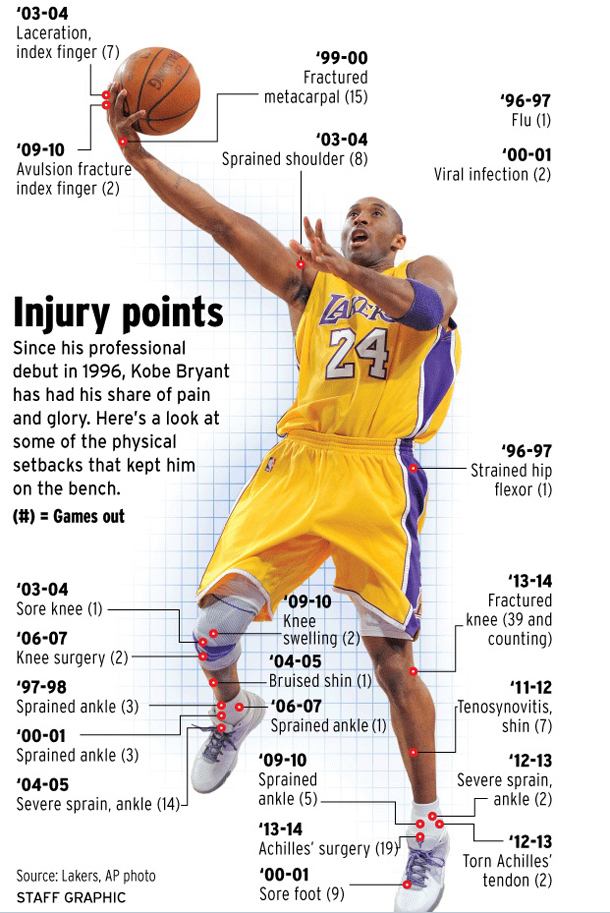
Item - air pressure in the ball.
To achieve this goal, it was necessary to solve a number of tasks:
1. Collect literature on the topic;
2. select research methods;
3. study the history of the origin of the ball, its varieties;
4. find out what sports games are played with the ball;
5. conduct an experiment explaining why the ball jumps to different heights after the amount of air in it changes;
6. draw conclusions.
Thanks to the following methods , a study was performed:
- work with Internet sources;
- work with literature;
- analysis;
- comparison.
Starting the study, we put forward the following assumption : if you release air from the ball, it will bounce lower.
Problem question of our study is: How does the amount of air in a basketball affect how high it bounces? How do basketball players determine how much air a basketball needs to have in order to play?
The novelty and practical significance of our study as a whole lies in the choice of the ball as the object of study.
1. Theoretical part.
1.1. Communication with history and science
The encyclopedia "I Know the World" says that the ball is one of the most ancient and favorite toys of all countries and peoples.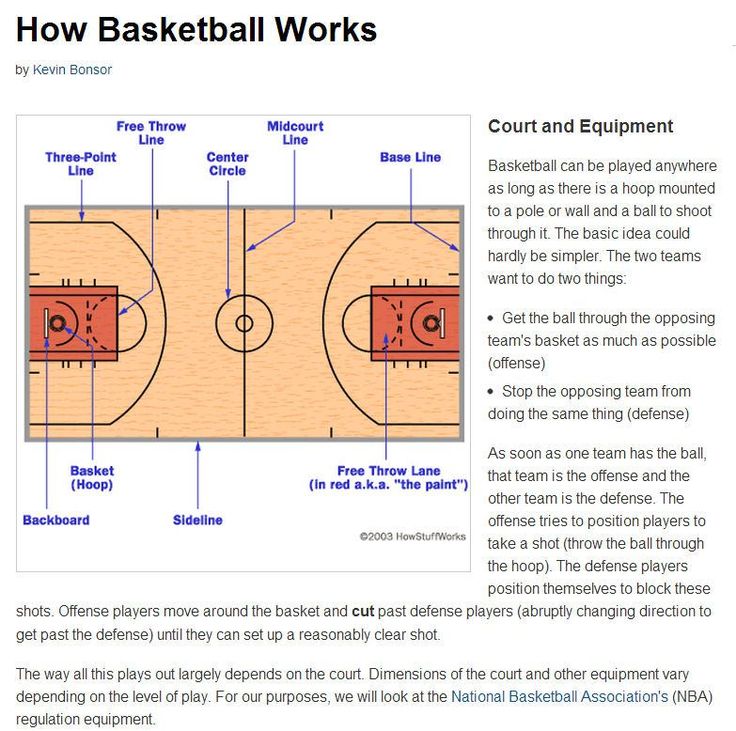 In ancient Greece, it was considered the most perfect object, since it had the shape of the sun, which means (as the Greeks thought) it had its magical power. They sewed balls from leather and stuffed them with some elastic material, for example, moss or bird feathers. And later they guessed to inflate the leather ball with air. Such a ball was called "follis". Small follices were used for hand games, and large balls were used for games like football. Images of balls were found on the walls of Egyptian tombs, and during excavations of the burial places of the pharaohs, balls themselves were found, sewn from strips of leather or tree bark, and sometimes made of sandstone. The team games of the Egyptians with these items were dedicated to the gods, each team represented the interests of a group of celestials, the ball was driven into the gate with curved sticks. [1
In ancient Greece, it was considered the most perfect object, since it had the shape of the sun, which means (as the Greeks thought) it had its magical power. They sewed balls from leather and stuffed them with some elastic material, for example, moss or bird feathers. And later they guessed to inflate the leather ball with air. Such a ball was called "follis". Small follices were used for hand games, and large balls were used for games like football. Images of balls were found on the walls of Egyptian tombs, and during excavations of the burial places of the pharaohs, balls themselves were found, sewn from strips of leather or tree bark, and sometimes made of sandstone. The team games of the Egyptians with these items were dedicated to the gods, each team represented the interests of a group of celestials, the ball was driven into the gate with curved sticks. [1
And in ancient China they played ball, for example, by kicking it with their foot. The game eventually became a favorite folk entertainment, and in the 2nd century BC.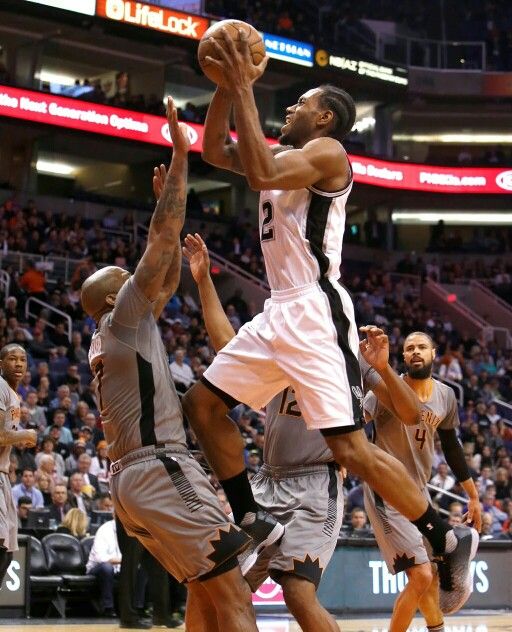 included in the obligatory program of the solemn celebration of the birthdays of the emperor. At the same time, instead of stuffing with bird feathers and animal hair, they learned to fill leather balls with air, developed rules, and began to install gates on the playing field. The winners were honored with flowers, awarded with valuable gifts, and the losers were beaten with bamboo sticks.
included in the obligatory program of the solemn celebration of the birthdays of the emperor. At the same time, instead of stuffing with bird feathers and animal hair, they learned to fill leather balls with air, developed rules, and began to install gates on the playing field. The winners were honored with flowers, awarded with valuable gifts, and the losers were beaten with bamboo sticks.
In ancient Japan, too, they could not do without a ball. At the imperial court, team games were held to drive the ball into the goal for a certain time (measured by the hourglass), during the throw it should not touch the ground.
In Russia, the balls were different. In excavations near Novgorod, balls of various sizes were found, sewn from leather. They were played by children in the 13th century. Peasant children played with light balls made of birch bark or heavy balls tightly rolled from rags. Even information about one of the games has been preserved: they put chicken eggs in a row and knocked them out with a ball. In the Khotkovsky nunnery near Moscow, balls were sewn from soft pillows, and pebbles wrapped in birch bark were put inside - it turned out to be a ball and a rattle at the same time. By the way, the origin of the word "ball" is associated with the words "soft, pulp, crumb." That is, the ball is a soft ball.
In the Khotkovsky nunnery near Moscow, balls were sewn from soft pillows, and pebbles wrapped in birch bark were put inside - it turned out to be a ball and a rattle at the same time. By the way, the origin of the word "ball" is associated with the words "soft, pulp, crumb." That is, the ball is a soft ball.
Modern balls vary in size and purpose. Different balls are used for playing volleyball, basketball, football, tennis, water polo, rugby and other games.
Each of them has its own story. The name of the game of basketball came from the English words "basket" - "basket" and "ball" - "ball". This game was invented by D. Naismith, a sports instructor from one of the American universities, in 1891. At his direction, a large fruit basket was nailed under the ceiling of the sports hall and a ball was thrown into it. When the players got tired of climbing for the ball every time, it occurred to someone to just knock the bottom of the basket out. At first, basketball players used leather balls, and then switched to rubber ones.
At first, basketball players used leather balls, and then switched to rubber ones.
The basketball must be spherical and must be the specified shade of orange with the traditional pattern of eight inlays and black stitching. The mass of the ball (officially accepted size 7) is 567-650 g, the circumference is 750-780 mm. Smaller balls are also used: in men's team games, "size 7" balls are used, in women's team games - "size 6", in mini-basketball matches - "size 5".
1.2. Definition of concepts
Working with the dictionary of S.I. Ozhegov, we learned that a ball is an object for playing a solid or full ball made of an elastic material inside, which bounces off a hard surface upon impact. [2]
Pressure is a physical quantity equal to the ratio of the force acting perpendicular to the surface to the area of this surface.
Pressure unit - Pascal (Pa). Using also other pressure units: hectopascal (hPa) and kilopascal (kPa) 1 kPa = 1000 Pa 1 Pa = 0.001 kPa 1 hPa = Pa 1 Pa = 0.01 hPa
The force arising in the body as a result of its compression and stretching (deformation) tending to return the body to its original position is called the elastic force.
According to the free encyclopedia "Wikipedia" elasticity is the property of solid materials to return to their original shape during elastic deformation. Solid objects will deform after a force is applied to them. [3]
Basketball size
First of all, when choosing a ball, you should pay attention to the size of the basketball. Size 7 means you are holding a ball that is suitable for men.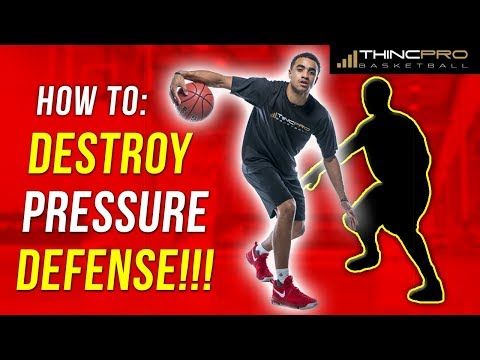 Its weight can range from 567 to 650 grams. Size 6 is primarily used in the games of teenagers under 16 and adult women's teams. In addition to the circumference, its weight has also been reduced - from 510 to 567 grams. Size 5 is officially suitable for training and games of junior teams, with a weight of 470-500 grams. Of course, in your training you can use the size of the ball that you have at hand. By learning to handle a size 7, you are more likely to master a size 6 with ease. Unfortunately, the inverse doesn't always work.
Its weight can range from 567 to 650 grams. Size 6 is primarily used in the games of teenagers under 16 and adult women's teams. In addition to the circumference, its weight has also been reduced - from 510 to 567 grams. Size 5 is officially suitable for training and games of junior teams, with a weight of 470-500 grams. Of course, in your training you can use the size of the ball that you have at hand. By learning to handle a size 7, you are more likely to master a size 6 with ease. Unfortunately, the inverse doesn't always work.
2. Practical
In the practical part, we had to solve the following problems:
- determine how the height to which the basketball bounces changes when the air pressure changes in it;
- build a graph based on the received data;
- draw conclusions based on the data obtained.
Different manufacturers measure pressure in different units, psi (pounds per square inch), bar (pressure unit approximately equal to one atmosphere), kgf/cm² (one kilogram of force per square centimeter), kPa (kilopascal). In the United States of America, the pressure inside the ball is usually measured in pounds per square inch (lb/dm 2 ).
We experimented with the amount of air in a basketball, but for measurement, we used units that are accepted in our country, namely kilopascals (kPa).
We measured the amount of air in a basketball and then used a distance sensor to measure how high the ball bounced.
Materials and equipment:
- A computer with the Logger Lite program installed on it;
-Go!Link adapter;
- Gas pressure sensor;
- distance sensor;
- Basketball;
- Stopper with needle, stem and tube;
-Measuring ruler.
Our experiment was carried out according to the following algorithm:
To configure the sensors for data collection, you need:
Check distance sensor connection to computer.
Set the distance sensor switch to position Normal .
Verify that the pressure transducer is connected to the adapter and that the adapter is connected to the computer.
Launch the Logger Lite program.
Open file for this experiment Air Ball (Air ball) .
Then did the following:
They took a basketball.
Zeroed the pressure sensor by pressing the Reset button on the toolbar.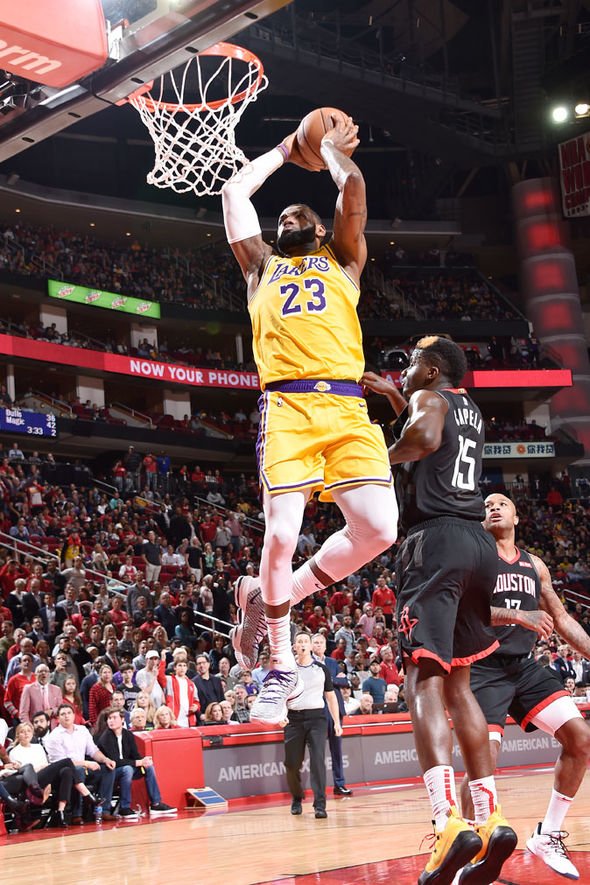 Next, the sensor measured the pressure in the same way as the measuring device on a bicycle pump.
Next, the sensor measured the pressure in the same way as the measuring device on a bicycle pump.
Moistened the needle attached to the pressure transducer and inserted it into the ball.
Recorded data in the first line of the column "Actual pressure" of the data table.
Attached a distance sensor at a height of 2.3 m.
To collect data, did the following:
Hold the ball directly under the sensor so that the space between the ball and the sensor is about 15 cm.
Button pressed Data acquisition . Hearing the click of the sensor, they released the ball from their hands so that it hit the floor and bounced. No need to throw the ball with force!
Next, press the button View, to determine the position of the floor relative to the sensor and the distance to the ball at the top of the bounce of ball #1. We recorded the obtained data in a table.
We recorded the obtained data in a table.
Next, we gradually reduced the pressure in the ball:
Moistened the needle attached to the pressure transducer and inserted it into the ball.
Watched the pressure reading on the screen.
Released some air.
Watch the pressure reading on the screen until it drops by 20 kPa (for the first time, the pressure will drop from 124.88 kPa to 105.79 kPa).
When the pressure dropped by 20 kPa, screwed on the connector so that no more air escaped.
Recorded the value in the second line of the "Actual pressure" column of the data table.
Repeat steps 3-7 for 80 kPa, 60 kPa, etc. until you reach a test where the pressure was 5 kPa.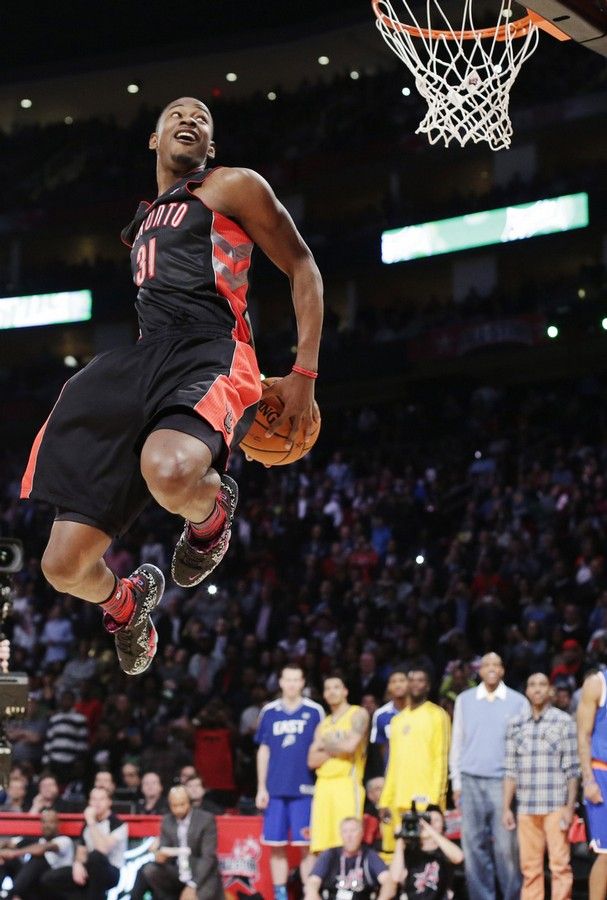
Data table (graphs are in the appendix):
Drop height 2.321 - ball distance 0.214 m = 2.107
| No. experiment | Low point | Rebound top No. 1 | Rebound Height #1 = Distance to Floor - Rebound Top #1 | Pressure |
| 1 | 2. 073 073 | 0.714 | 1.359 | 124.88 |
| 2 | 2.038 | 0.834 | 1.204 | 105.79 |
| 3 | 2.075 | 0.914 | 1.161 | 80.1 |
| 4 | 2.074 | 1. 003 003 | 1.071 | 60.1 |
| 5 | 2.044 | 1.154 | 0.890 | 40.1 |
| 6 | 2.075 | 1.344 | 0.731 | 20.1 |
| 7 | 2.080 | 1.5 | 0.580 | 10 |
| 8 | 2. 074 074 | 1.584 | 0.490 | 5 |
Pins:
There is a pattern of change in the height of the rebounds with a decrease in pressure in the ball - the height of the rebounds decreases. The lowest air pressure in the ball allowed for playing basketball: 80 kPa.
Conclusion
What is basketball training without the main attribute of the game - a basketball? It is the basketball that gives us the opportunity to enjoy the gameplay in all its diversity.
Often when inflating a basketball, the question arises whether to inflate it more or less. We have to resort to the help of the Internet in search of information regarding this issue.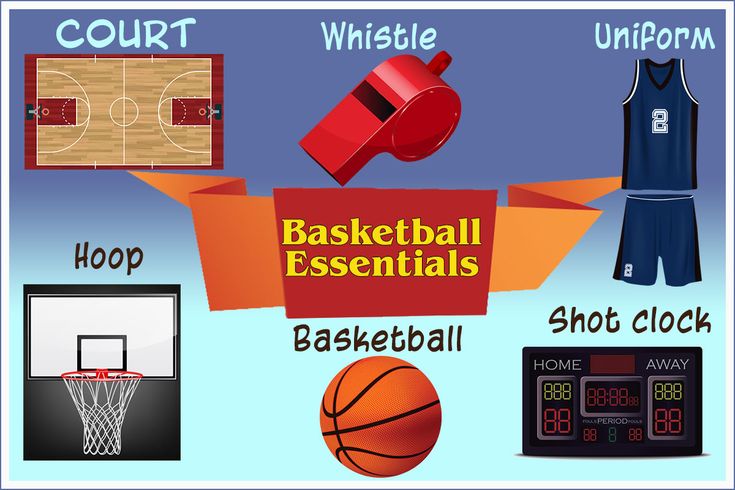 We decided to answer the question, what is the optimal pressure should be in a basketball, since with the wrong level of pressure, the wear resistance of the chamber increases, which may simply not withstand and burst; there is a risk of injury; unpredictable flight path. The lowest air pressure in the ball allowed for playing basketball: 80 kPa.
We decided to answer the question, what is the optimal pressure should be in a basketball, since with the wrong level of pressure, the wear resistance of the chamber increases, which may simply not withstand and burst; there is a risk of injury; unpredictable flight path. The lowest air pressure in the ball allowed for playing basketball: 80 kPa.
Our study was carried out using Logger Lite software, Go!Link adapter, gas pressure sensor, distance sensor.
To achieve the goal, tasks were set that were successfully solved. To begin with, the literature on this topic was collected. Its analysis is presented in the theoretical part.
Getting to the practical part, we have identified research methods. Thanks to them, our study "The effect of air pressure on the height of the ball rebound" was carried out.
The hypothesis that we put forward at the beginning of the work was confirmed.
Having completed this study, we have developed a memo for fans of the game of basketball ( Appendix 2 ).
References:
I know the world. Sports: children. encyclopedia. - M.: AST: Astrel: Transitbook, 2006 - 382.
Ozhegov S.I. Explanatory Dictionary of the Russian Language, M .: LLC "A TEMP", 2008. p. 810
[Electronic resource] Access mode: Wikipedia - Head. from screen
[Electronic resource] Access mode: https://sportyfi.ru/basketbol/myach/kak-nakachat/ Head. from screen
Appendix 1
Experiment 1
Height
Pressure
Experiment 2
Height
Pressure
Experiment 3
Height
Pressure
Experiment 4
Height
Pressure
Experiment 5
Height
Pressure
Experiment 6
Height
Pressure
Experiment 7
Height
Pressure
Experiment 8
Height
Pressure
Appendix 2
Instruction for inflating a basketball
Note:
The pressure in the ball is quite strongly influenced by the ambient temperature and atmospheric pressure.